
致瞰(英文)(VIEW)(OA期刊)(国际刊号) 知网目次
- 主管单位:
- 主办单位:
全国卫生产业企业管理协会实验医学分会(PCEM)
- 国际刊号:
: 2688-3988;ISSN: 2688-268X
- 国内刊号:
- 学科分类:
- 字数:
-
- 有无基金:
- 周期:
国际号刊-双月刊
- 特殊属性:
外文期刊
- 电话:
- 邮箱:
editorial@view-journal.com(官网邮箱)
- 复合因子:
0
- 综合因子:
0
- 收录:
知网目次
- 级别:
期刊简介
《致瞰》期刊已被查看: 次
更新频次
单位占比
一作占比
投稿指南
1、该刊只有国际刊号。
2、投稿方式:在线投稿。
3、刊内网址:(202402期)
http://wileyonlinelibrary.com/journal/view
自动跳转至:
https://onlinelibrary.wiley.com/journal/2688268x
4、投稿系统:https://mc.manuscriptcentral.com/viw2
5、主办单位网址:https://www.caivd-org.cn/qikan.asp
(全国卫生产业企业管理协会实验医学分会;中国体外诊断网(中国实验医学网)Caivd (Caclp))
6、官网邮箱:editorial@view-journal.com
7、出刊日期:双月刊,逢双月出版。
2024年4月24日星期三
《致瞰(英文)》(VIEW)简介
【微信公众号“caclp_caivd”信息】
期刊简介
VIEW 期刊作为WILEY与PCEM共同出版的开放获取式期刊,主要关注生命健康的“可视化”,通过开发新型材料将“诊断”与“治疗”相结合,创造出更具潜力的新型诊断治疗学技术实现精准医疗。本刊接受的投稿类型多种多样,包括:研究性文章、综述性文章、通讯性文章、观点性文章、分析性文章和临床案例报告文章等。
VIEW 期刊旨在成为国际高质量的跨学科科研技术交流平台,欢迎具有影响力的创新跨学科研究人员前来投稿。VIEW 期刊将由各知名研究机构,体外诊断行业内顶尖科学家和临床医生所组成的编委会支持,期刊的读者群体包括全球学术界和工业界的科研人员、高级工程师等。
VIEW 期刊由全国卫生产业企业管理协会实验医学分会(PCEM)和WILEY共同出版,于2020年3月正式创刊,在创刊短短的1年多时间就被ESCI收录,表明VIEW 期刊在文章质量、期刊管理水平、期刊国际化和规范化等方面得到了国际学术界的认可,对扩大期刊传播范围,增加期刊显示度,提升学术影响力具有重要意义,也意味着对实验医学学科及体外诊断产业的发展将起到重要的推动和促进作用。
VIEW 已于2020年3月正式创刊并完成六期文章的出版。截止目前,VIEW 期刊已被Emerging Sources Citation Index (ESCI)、Dimensions、Directory of Open Access Journals(DOAJ)和Google Scholar数据库收录,在此我们诚邀广大科研人员将相关领域高影响力的创新成果投稿至此期刊。所有文章一经接受会在线发布,内容即可被引用。VIEW 期刊创刊前三年所收录的文章均无需交纳文章出版费。
期刊主页:
http://www.wileyonlinelibrary.com/journal/view
文章可以通过ScholarOne在线提交:
https://mc.manuscriptcentral.com/viw2.
联系我们:editorial@view-journal.com
《致瞰(英文)》(VIEW)作者指南
【官网信息】
VIEW
Author Guidelines
1. SUBMISSION
Thank you for your kind interest in VIEW. Submissions have to consist of content that has not been published or submitted for publication elsewhere except those as the brief abstracts in the proceedings of conferences or symposiums.
The submission system will prompt you to use an ORCID ID (a unique author identifier) to help distinguish your work from that of other researchers as well as develop your personal profile in a worldwide platform.
All submissions will be handled and processed using the ScholarOne online submission system.
A cover letter should be uploaded in the ‘Cover Letter Field’ of the ScholarOne system. The text can be entered directly into the field or uploaded as a file.
The cover letter must contain:
A statement confirming the paper has not been published or submitted for publication elsewhere except as a brief abstract in the proceedings of a scientific meeting or symposium.
An acknowledgment that all authors have contributed significantly; and in keeping with the latest guidelines of the International Committee of the Journal Editors, each author’s contribution to the paper is to be described, i.e., what role each author participated in.
A statement confirming that all authors are in agreement with the content of the manuscript.
In addition, authors should clearly state the motivation behind and the novelty of their research in the cover letter. Authors should also clarify key results and the advances made compared with their previous work.
Once you have prepared your submission in accordance with the Guidelines, manuscripts should be submitted online at https://mc.manuscriptcentral.com/VIW2.
2. AIMS AND SCOPE
VIEW is a high-quality, interdisciplinary and rapid-publication journal focused on “Biodiagnostics” in the field of biomaterials, from in vitro to in vivo, small to mega, fundamentals to application with the emphasis on the biomaterials used particularly in biotechnology and medicine.
VIEW embraces all significant advances in the research of: Drug delivery, Lab-on-a-chip, Microfluidics, Bioimaging, Biomarkers, Omics, Biosensors and bioelectronics, Computational diagnostics, Bioinformatics, and Novel diagnostic devices, etc.
VIEW publishes full-length research articles, short communication, reviews, mini reviews, perspectives, case reports, analyses and other editorial content of general interest to the field of biomaterials. VIEW aims to be a premier journal for researchers in both academia and industry, providing a platform for transforming research excellence to innovation.
VIEW cordially invites you to submit original research and review articles. All papers will be published online as soon as they are accepted and will be fully citable. In addition, there are no article publication charges for the first three publication years of VIEW.
3. MANUSCRIPT TYPES
(1) Research Article
Description: Research Articles are reports of original studies within the journal’s scope.
Word Limit: No strict word limit; however, it is recommended to keep within 5,000 words including the abstract but excluding references, tables and figures.
Abstract: Briefly describe the contents of the Research Article in 250 words.
References: No restriction on the number of references. The Wiley Chemistry-Material Sciences reference style should be used (see References section below for details).
Figures/tables: No restriction on the number of figures/tables but 10 figures/tables should be sufficient. Tables and figures should be submitted together with the main text of the article, and should be properly prepared and numbered as described here.
Keywords: 4-6 keywords to highlight the main subject areas of the article.
(2) Review
Description: Review Articles are comprehensive analyses of a specific topic. They can be submitted either by invitation from the Editors or by the authors themselves; both types will undergo the peer-review process prior to acceptance.
Word Limit: No strict word limit; however, it is recommended to keep within 8,000 words including the abstract but excluding references, tables and figures.
Abstract: Briefly describe the content of the Review Article in 250 words.
References: No restriction on the number of references. The Wiley Chemistry-Material Sciences reference style should be used (see References section below for details).
Figures/tables: Minimum of 1 table/figure. Tables and figures should be submitted together with the main text of the article, and should be properly prepared and numbered as described here.
Keywords: 4-6 keywords to highlight the main subject areas of the article.
Biography: Biographies of the first (or co-first) and corresponding authors should be provided. They should include photographs with a minimum resolution of 600 dpi and be 40 mm wide and 50 mm high.
(3) Mini Review
Description: Mini Reviews are comprehensive analyses of a specific topic. They can be submitted either by invitation from the Editors or by the authors themselves; both types will undergo the peer-review process prior to acceptance.
Word Limit: No strict word limit; however, it is recommended to keep within 4,000 words including the abstract, references, tables and figures.
Abstract: Briefly describe the content of the Mini Review in 200 words.
References: Maximum of 100 references. The Wiley Chemistry-Material Sciences reference style should be used (see References section below for details).
Figures/tables: Maximum of 2 table/figure. Tables and figures should be submitted together with the main text of the article, and should be properly prepared and numbered as described here.
Keywords: 4-6 keywords to highlight the main subject areas of the article.
Biography: Biographies of the first (or co-first) and corresponding authors should be provided. They should include photographs with a minimum resolution of 600 dpi and be 40 mm wide and 50 mm high. We recommend keeping the biography list as short as possible.
(4) Editorial [only by invitation from the Editors]
Description: Written by Editorial Board members, invited authors or editors.
Word Limit: Maximum of 1,000 words.
Abstract: Not required.
Figures/tables: Maximum of 2 figure/tables. Figures/Tables should be submitted together with the main text of the article, and should be properly prepared and numbered as described here.
References: Maximum of 5 references. The Wiley Chemistry-Material Sciences reference style should be used (see References section below for details).
Keywords: Not required.
……
更多详情:
https://onlinelibrary.wiley.com/page/journal/2688268x/homepage/author-guidelines
上一篇:复旦马克思主义评论(集刊)下一篇:铁道工程科学(英文)(Railway Engineering Science)(原:现代交通学报(英文)(Journal of Modern Transportation);西南交通大学学报(英文版)
《致瞰》同类医卫综论期刊
-
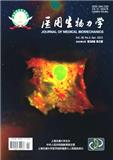
医用生物力学
北核,CSCD,科核,武A
CN中文-双月刊影响因子1.164
-
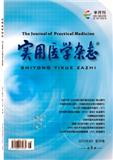
实用医学杂志
北核,科核,武A+
CN中文-半月刊影响因子1.949
-
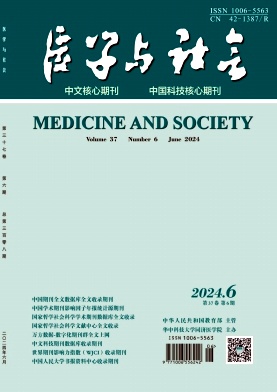
医学与社会(原:同济医科大学学报.社会科学版)
北核,科核,CACJ-核心,AMI扩,武B+
CN中文-月刊影响因子2.142
-
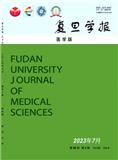
复旦学报(医学版)
北核,CSCD,科核,武A
CN中文-双月刊影响因子1.332
-
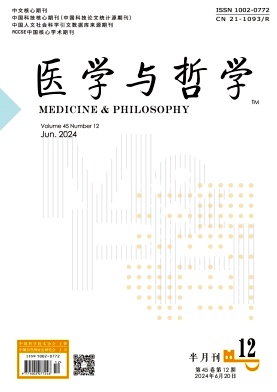
医学与哲学(原:医学与哲学(A)、(B)等)
北核,科核,科核,武A-,AMI扩
CN中文-半月刊影响因子1.425
-

中国全科医学
北核,科核,武A+
CN中文-旬刊影响因子2.882
-
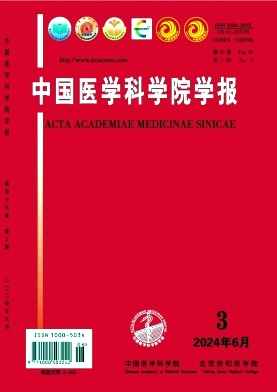
中国医学科学院学报
北核,CSCD,科核,武A
CN中文-双月刊影响因子1.431
-
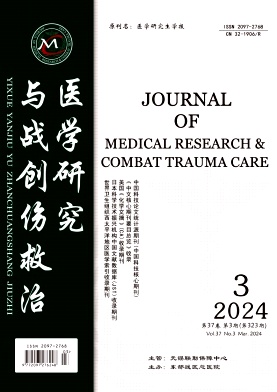
医学研究与战创伤救治(原:医学研究生学报;金陵医院学报)(不收版面费审稿费)
北核,科核,武A
CN中文-月刊影响因子1.579
常见问题
-
致瞰杂志社官网、联系方式是什么?
致瞰杂志社官网:https://onlinelibrary.wiley.com/journal/2688268x
投稿网址:https://mc.manuscriptcentral.com/viw2
投稿邮箱:editorial@view-journal.com(官网邮箱) -
致瞰杂志是核心期刊么?
致瞰不是核心期刊,级别是:, 是:医卫综论分类下的知网目次收录的期刊。
-
请问你们是致瞰杂志社吗?
我们不是《致瞰》杂志社。本站主要从事期刊信息展示与期刊推荐,不是任何杂志官网,直投稿件请联系杂志社。本站仅提供免费的学术指导、论文辅导、期刊投稿信息整理收集服务。
-
你们指导服务后可以保证文章被发表吗?
期刊发表的成功与否,主要取决于文章内容的质量。编辑老师会根据研究领域、创新性等多因素进行考量。我们会帮助您理解期刊的发表要求,助力提升发表几率,从而增加发表的机会。
-
晋级论文能否在报纸上发表?
在学术界,论文的发表往往被视为研究者职业发展的重要一环。晋级论文,即为了获得更高职称或学术地位而撰写的学术论文,通常需在专业期刊上发表。然而,许多人可能会问
